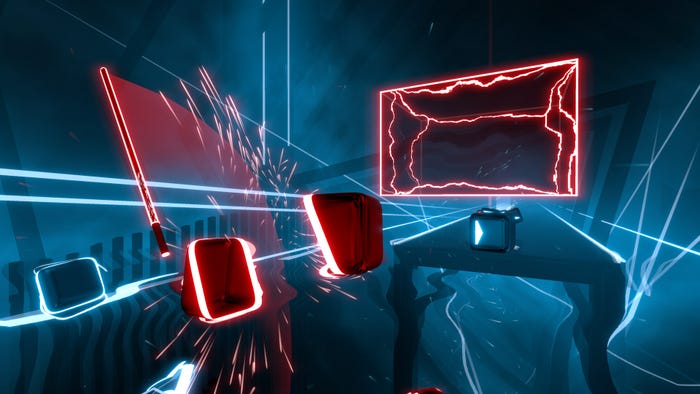GameDev Protips: How To Make A Legitimately Good Action Game
GameDev Protips: How To Make A Legitimately Good Action Game

Action games are one of the most common game genres in existence. It’s no secret that some of the most popular games of our generation have gotten the formula right from the perspective of the players. Let’s dissect that and figure out what they’re doing.
Have you ever noticed that most of the really popular action games are super fast-paced? If you have bullet-sponges as enemies, combat just doesn’t feel good. Instead of having a few tanky enemies, have a lot of weaker enemies in the right areas. In addition, make sure weapons don’t feel sluggish; give them a higher rate of fire. When the player is killing tons of enemies in a small timeframe they feel as if they’re accomplishing a massive amount, even if the HP-pool is the same as if you had just used a few tanky enemies instead.
Animations and sound are critical. Even if your gameplay loop is absolutely perfect, if it looks like your animations were made in five minutes it will be judged as such. At the very least, attack animations should be refined until perfection. On the topic of realism, while you don’t have to go all the way, having a little bit will never be a bad thing. A little muzzle flash for guns or a “swoosh” trail for melee weapons can go a long way to making the combat feel better. Making some weapons purposefully inaccurate might not be a bad thing either, since it gives the player another factor to think about. Just make sure this isn’t implemented to a frustrating degree, as is the case with Call of Duty sniper rifles being shot without using the scope.
As mentioned above, satisfying combat is extremely important to a good action game. Also, sacrificing some realism is a good idea if it’s for the sake of fun. If your guns or other weapons are not hitscan weapons (meaning that they hit instantly), having projectiles that are too sluggish can make combat feel lackluster. If the player has to think too hard about predicting enemy movement, it can make the game too complex for the common player to enjoy properly, unless that is a feature of a weapon as with rocket launchers. One of the other reasons that the Call of Duty games are so well praised is the feedback you get from simply playing the game.
A kill is rewarded by flashing lots of text on your screen saying “good job,” and the hit-markers you get in the process have a really satisfying sound that makes it fun to repeat. Enemies also flinch and spurt blood with screen shaking with gun kickback as you shoot which is a great indicator that the player actually did something. In other games, enemies are also knocked back by the forces of damage, and that can make it feel as if you’re doing something effective as well; when you shoot a rocket at something and it goes flying miles away, that’s extremely satisfying.
Although solid combat is important, a satisfying aftermath of combat is also significant to many people; give the players a sense of permanence. Rubble from explosions, bodies laying around, stats telling you how you did, and other marks like bullet holes staying around all helps to make the player want to engage in combat again since they receive tangible results. In a similar vein, make sure that getting from combat session to combat session isn’t frustrating for the player; make movement satisfying. Have some camera lerp so that the player has a sense of speed. Make sure the player knows what’s ahead in the case of top-down action games. Have an upgrade building of some sort you can visit between combat to improve the player’s capabilities so they’re excited to test out their new-found strength.
With movement, you should make sure your movement inside of combat is up to par with the rest of the game as well, If your game is a shooter, make sure you can strafe, or do some kind of action dodge — anything that adds an additional layer to the gameplay besides “shoot and don’t die.” As long as the player doesn’t feel stuck to a particular place when they’re engaged in combat, you’re doing your job right.
How can you take things even further? Not all of these next suggestions will fit every action game, but if you’re looking to give your game a little boost over the edge, these might take the cake. Make the permanence effect even stronger. Have the blood from enemies stain the floor for the rest of the level, have your guns leave shells behind that will litter the battlefield, allow bodies to be affected by physics, anything like that that can give the player a stronger sense that what they’re doing actually has effects.
Give your progression system the ability to make things completely broken in the right context. The more power the player feels like the have, the better the gameplay will seem to them. This also works well if you have a balanced difficulty curve so that your weapons stay comparable to the enemies’. Random explosions can always spice things up. Give enemies a chance to explode into a gory mess upon kill. Have enemies enter by explosive means. Make your common weapons absolutely destructive on the environment. Explosions will always make things a billion times more exciting, so don’t be afraid to go nuts.
Have a stronger bass for your attack sounds. The deeper sounds really make them pop out to the player, and they can also be felt to an extent. This adds on to making combat satisfying, but sometimes having an overage of bass can just be obnoxious, so this doesn’t always fit a game. Ramp up the difficulty as you progress through the game. This can either be exponential growth if you have progression or linear if you don’t. Some of the best action games have extremely climactic endings to their single player modes, and these always come from an extremely hard final boss, or some other difficult task that the player most overcome and ultimately feel great about passing afterwards.
Give your game a real meaning. Sometimes mindless violence can be fun, and thus this isn’t always necessary, but if the player’s’ actions don’t matter they may not wish to continue on. This can be done in various ways. The most common method is to have some lore or a strong storyline that gives the player’s character a place in the game, and as a result the player wishes to see them through to the end. Sometimes difficulty alone can accomplish this as well.
Important Takeaways: Action games are extremely popular, and as a result, the knowledge of how to make a good one is invaluable for a game developer. While more specific guidelines are above, there’s a very general formula you can follow to make a good one: Having good presentation both visually and audibly, having fast-paced combat with lots of weaker enemies rather than a few stronger ones, giving the player very impactful weapons, making their movement satisfying, making the player’s accomplishments known, having a difficulty ramp that will give the game a climactic ending, and making sure the game actually has meaning so that players will be willing to continue to the end in the first place. If you follow a good number of these guidelines, you’ll likely have something great by the end.
---
I'm Daniel Doan, the Co-Founder of Black Shell Media. Thank you so much for reading.
If you’ve found this article helpful, please share it with your friends on social media!
Follow me on Twitter or add me on Facebook to keep updated on my latest articles!
P.S. You can also read more of my posts here on my blog as well.
Read more about:
BlogsAbout the Author(s)
You May Also Like













